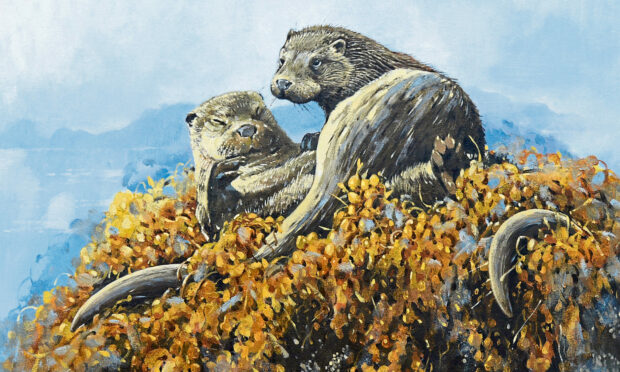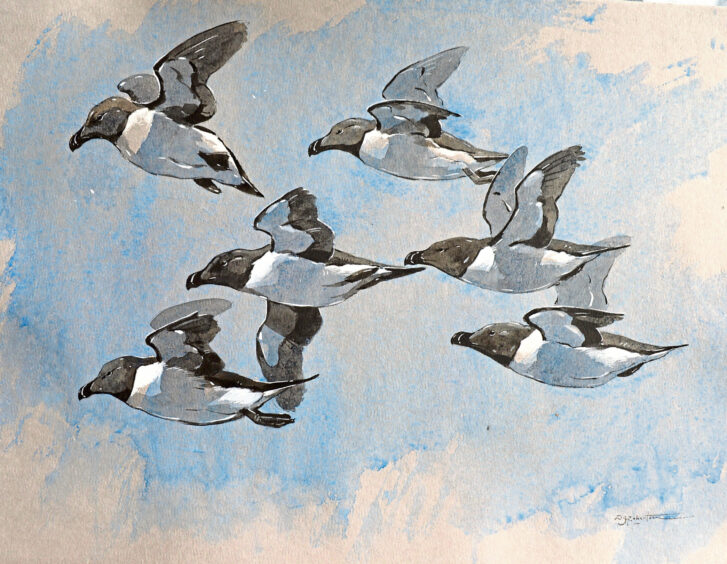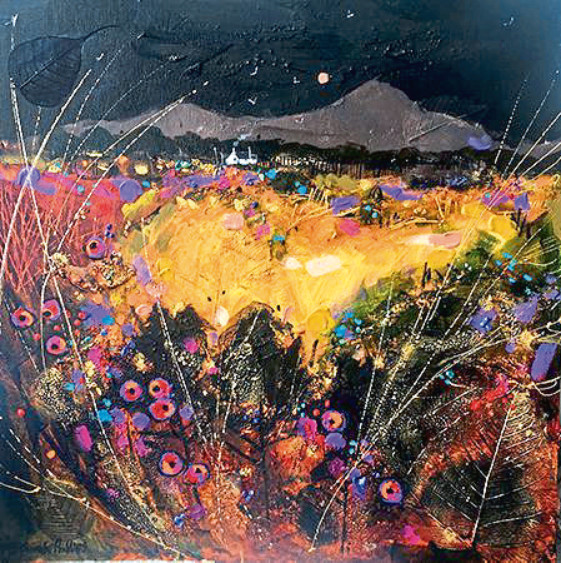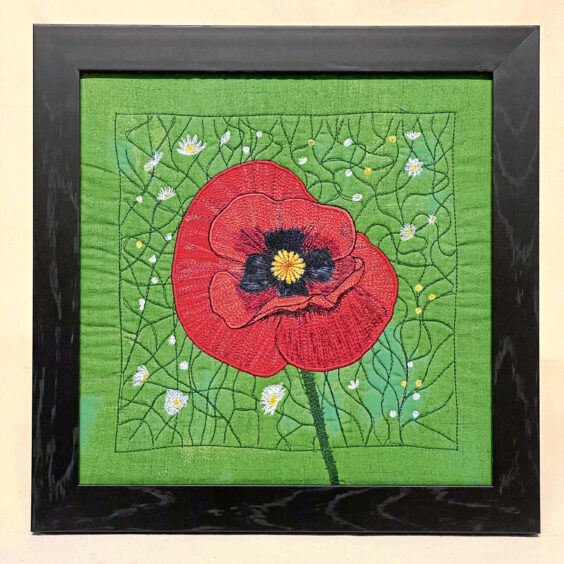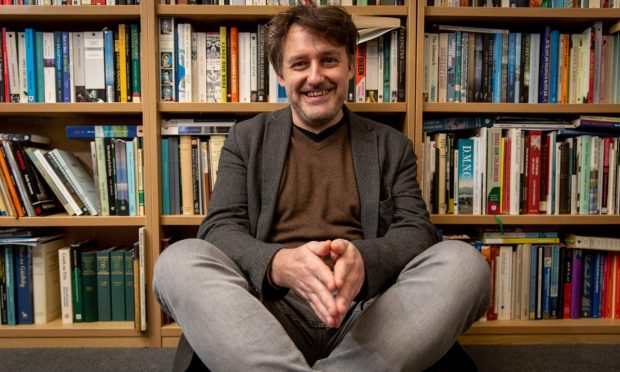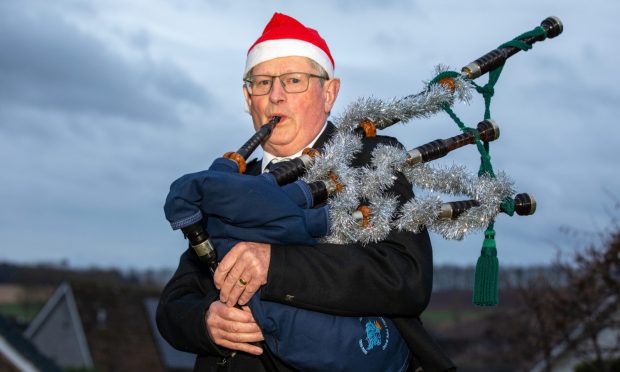Once you know what to look for, Derek Robertson’s studio is easy to spot – there is a picture of a heron at the entrance to his home in the picturesque village of Balmerino.
It is a clue that this Dundee-born painter is also a passionate nature lover and keen to invite visitors to his place of work, especially this weekend as Open Studios North Fife makes a welcome return.
Cancelled in 2020 due to lockdown, this annual event was replaced by a virtual studio tour of online galleries, while this year it has been postponed from its usual May Bank Holiday slot.
Now 67 participants are ready to open their doors across the northern half of the Kingdom, from Tayport to Falkland and St Andrews to Newburgh.
Variety of art
Browsing its online brochure, you find clusters of artists and craftspeople in certain Fife towns, among them Cupar, Newport-on-Tay and Ladybank, with a wide range of interests that include ceramics, photography, jewellery and sculpture.
Others are based in smaller communities, as with Robertson, who lives just down the road from the ruins of Balmerino Abbey.
This professional artist, who studied at Duncan of Jordanstone College of Art and Design, was brought up two miles from where he now lives, among the fields that gave him an early interest in wildlife as well as art.
Nature as inspiration
Robertson has exhibited in the US, painted high in the Cairngorms’ snowfields for Grampian Television and published books, though he still finds time to pursue his hobby as an “enthusiastic amateur naturalist”.
He is chairman of the Tay Ringing Group, which studies bird populations in the region, notably around the river’s expansive reed beds.
On his easel currently, though, stands a representation of roaring stags – a memento of several weeks he spends every summer in Skye.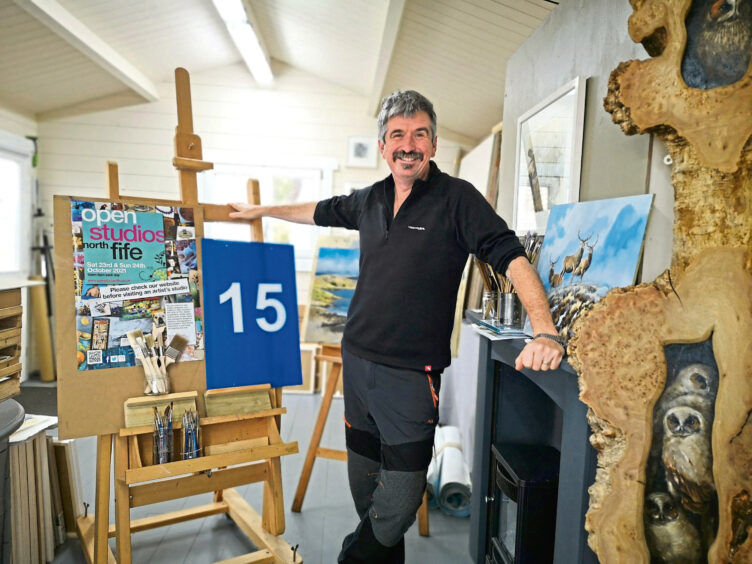
Derek Robertson. welcomes visitors to his studio.Yet Robertson still looks forward to welcoming art lovers to his white-painted shed, not least because the point of Open Studios is to discover where and how artists work.
He says: “The art work is physical, so people like seeing it and engaging with it, whether it’s a pot, picture or piece of jewellery.
“The uniqueness of our open studios is the direct contact with the artist in the creative space they work in.”
Environmental concerns
While much of his art is inspired by direct observation, there are series of works that suggest deeper concerns.
As well as representational paintings of local wildlife and landscapes, he has three longer-term projects:
Migrations has been inspired by travels to the borders of Syria and Iraq in the wake of the refugee crisis, where he taught art classes, while Testaments of Loss sees Robertson examine the environmental setbacks he has witnessed over the past 30 years.
On show for COP26
Robertson is also working on Bho Bheul an Eoin (From The Bird’s Mouth).
It’s a book that aims to give names in Scottish Gaelic to animals and plants, from mandarin ducks to Japanese shrimp, that have colonised Scotland in the past 30 years.
Some of his paintings are set to be shown at The Mitchell Library, Glasgow, for COP26, so Joe Biden and the Pope may visit, he suggests.
Deborah Phillips landscapes
Downriver in Woodhaven, by the lane to Wormit Boating Club, Deborah Phillips focuses exclusively on Scottish landscapes.
Inspired by her artist father Douglas, she has been painting since a young age and first exhibited aged 14 at the Royal Scottish Academy, Edinburgh.
Another DJCAD graduate, and previously merchandise designer at the National Trust for Scotland, Phillips has developed a distinctive, colourful style using bright acrylics.
She says: “I like juxtaposing colours, oranges against purples, that pop together; and you do see these in nature, but perhaps not in the same way.”
Look closely and you notice that Phillips adds leaves or scrap paper to her canvases before she paints.
This is to provide extra texture, and she finishes her landscapes with sparkling effects that evoke the glitter of dew drops on the grasses.
These views come from her and her husband’s car journeys across the country.
Craft as art
Textile artist Andrea McMillan has only in the past month gone part-time as local studies supervisor at Cupar library.
“During lockdown I was home-working from my studio and it made me reassess my priorities. Now I’m spending three or more days a week sewing,” she says.
McMillan originally devoted her spare time to dressmaking until a friend took her to a City & Guilds patchwork and quilting exhibition that showed her a different take on embroidery.
She works from a wood cabin at her home in Auchtermuchty, where this weekend she can explain her particular technique to make carefully-observed landscapes, flowers and more abstract compositions.
Open Studios means a great deal to McMillan, who only began to see herself as an artist once she was awarded a bursary in 2016 to take part.
“It put me on the path of deciding I was an actual artist,” she remembers.
“I had been quilting for more than 20 years, but that is regarded as a craft and not taken terribly seriously.
“I didn’t take myself seriously until I was given the bursary, and that feeling that I had been accepted by my peers was an enormous boost to my self-confidence.”
